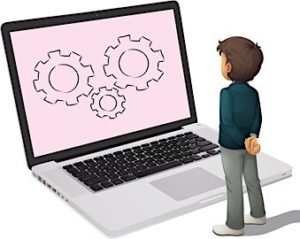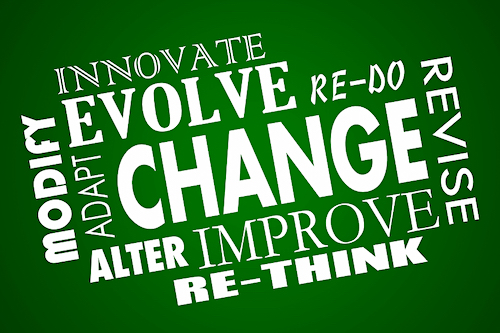Leadership Planning for Uncertain Times Ahead
By Ronald Williamson and Barbara R. Blackburn


Because of the rapid switch to remote learning, educators found themselves reacting to events rather than engaging in a more deliberate and thoughtful plan to move to remote learning.
Since then, we’ve watched as educators accepted the change, focused first on students, and adapted their instruction. We applaud everyone for their work during those challenging times.
Planning for the Future
No one can predict what the next school year will look like. Every state is developing guidelines and considering alternatives. As we go to press, it’s uncertain whether instruction will return to the traditional face-to-face model, continue remotely, or be a combination of the two.
What many educators anticipate is that remote learning is not going away. It will continue to be a part of the educational landscape and school leaders need to begin to think of it as part of the “new normal.”
It’s absolutely essential that school leaders work with their school community to develop plans that can be quickly implemented if remote learning continues. As we talk with principals and teachers, we’ve learned that four things are essential as you do your planning.
Step 1: Engage Stakeholders
One thing is certain. A principal or other school leader can’t anticipate everything that needs to be done to successfully teach remotely. So we suggest that the first step is to engage members of your school community. Most schools already have a school improvement team or other shared decision-making group. We encourage you to convene that group to help identify the issues and plan your response. Be sure to include teachers who have experienced the first round of remote teaching.
It’s also important to include parents and other family members. Make sure that every segment of your school community is represented. That includes families who may not have the same access to technology as your most affluent families, and families who may be experiencing challenges in the current economy.
The key is to create a group that will engage in open honest discussion of the issues, provide you with thoughtful feedback, and help to chart the path forward.
Step 2: Identify the Issues and Gather Data
You’ve probably developed a list of things to do, and you’ve likely identified some things that need to be improved. But we suggest that you work with the group to find out “what worked” and “what didn’t work.”
The path forward is clearer when you’ve identified any barriers and plan carefully for addressing those barriers. In many schools distribution of technology to students or providing access to buildings to retrieve belongings were major logistical issues. Talk with your teachers and with families about how you might do that in the future. There are countless other issues.
One way to gather data and insight into launching remote learning is to invite families and staff to participate in online chats. Many of us are tired of Zoom meetings, but Zoom, or another technology, provides a way to have a meaningful conversation with groups of families or with your staff.
Limit the size of the group so people can talk. Hold multiple sessions. Listen intently. Don’t be critical. Not everything worked well. People understand the urgency of what happened, but they will appreciate the chance to shape future plans.
Once you’ve identified the issues you can get to work designing plans to address them.
Step 3: Assure a Common Base of Information
A major issue in many communities was how rapidly things changed, and access to accurate, up-to-date information was often spotty. Because most families balance work schedules with school and other activities, people crave information that will help them plan. So anything you can do to put in place mechanisms for up-to-date, accurate, and timely, information is critical to success.

Ron talked with a group of principals about communication, and to a person who was concerned about inaccurate posts and rumors that were spread on social media. One middle school principal said she regularly joined nieghborhood social media groups like “NextDoor” (https://nextdoor.com) just to ‘listen in” on the conversation. She said it was like “an early warning system” that alerted her to issues that were bubbling in the community, what people were talking about.
Regardless of the way you communicate, it is critical that it be monitored and managed. Monitor comments. Keep the content current and fresh. Just because the physical school is closed shouldn’t mean content goes stale and is not refreshed. One principal was concerned that people reported, “school was closed.” He said, “We’re not closed, we’ve just moved online.”
Step 4: Anchor the Plan in Your Vision
Regardless of the plans you develop, it is critical that your school continues to align every decision with the school’s shared vision. A clear, compelling vision can sustain organizations during challenges like a move to remote learning.
In addition to the school’s shared vision, think about your own personal vision. What values and beliefs do you hold that should not be compromised if your school operates in a non-traditional way?
In most school communities a strong vision includes a real focus on social equity. How do you assure that every child has access to the resources for success when learning remotely? How do you support families when parents must work outside the home and aren’t present to support their children’s learning? How do you assure that your teachers, and other staff, have the resources needed to support students and families?
Those are critical questions, fundamental to the success of every student. But they are also issues that can be neglected in the rush to remote learning. A more intentional, deliberate plan will almost assuredly address these issues.
Final Thoughts
Schools are dynamic places and experience constant change. New families arrive while others move on. Some teachers retire and others get hired. Communities change as the economy changes. But schools have never experienced such rapid change as over the past few months.

References
Williamson, R. & Blackburn, B. R. (2020). 7 Strategies for Improving Your School. New York: Routledge.
Williamson, R. & Johnston, J. H. (2012). The School Leader’s Guide to Social Media. New York: Routledge.
Dr. Ronald Williamson is Professor of Leadership and Counseling at Eastern Michigan University. He was a middle grades teacher, principal, and executive director of instruction in Ann Arbor, MI. He’s also served as executive director of the National Middle School Association (now AMLE) and as president of the National Forum to Accelerate Middle Grades Reform. He received the Gruhn-Long-Melton award from NASSP in recognition of lifetime achievement.
Ron works with middle grades schools across the country and is the author of numerous books, including 7 Strategies for Improving Your School (Routledge, 2019). He can be reached through his website.
Dr. Barbara R. Blackburn was named one of the Top 30 Global Gurus in Education. She is a best-selling author of over 20 books including Advocacy from A to Z written with Robert Blackburn (her dad) and Ron Williamson. An internationally recognized expert in the areas of rigor and motivation, she collaborates with schools and districts for professional development. She can be reached through her website. Follow her on Twitter @BarbBlackburn.




































